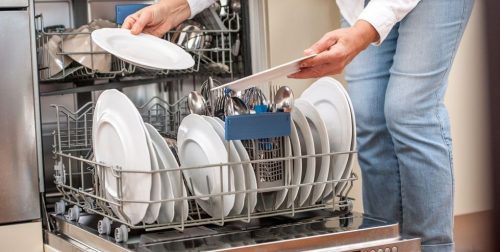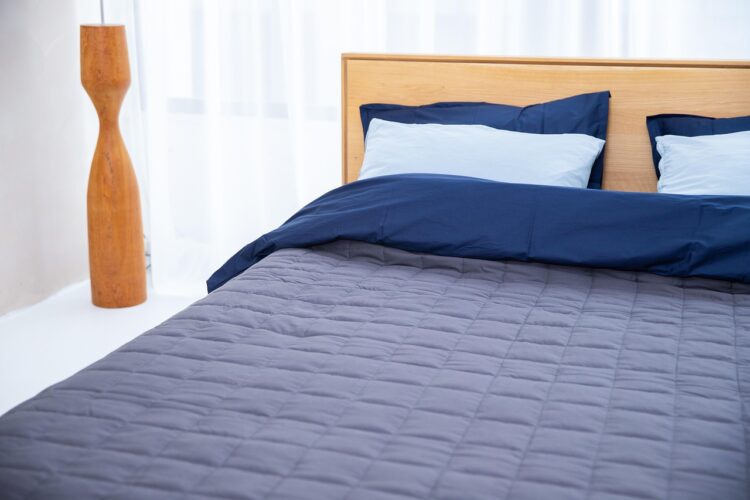🔄 Frequently Cleaned Items — But Still Not Clean Enough
There are a few household items we think we’re cleaning properly — but even with regular attention, they often don’t get the deep clean they truly need. These everyday items see constant use, quick wipe-downs, and rinse-offs, yet still harbour germs, buildup, and odours if we don’t go a little further.
Think of things like cutting boards, dishcloths, kitchen counters, bathroom taps, and even your shower floor. They may be part of your routine, but “frequent” doesn’t always equal “thorough.”
How often to deep-clean:
-
Cutting boards: After each use, and disinfect weekly (especially after raw meat).
-
Dishcloths & towels: Swap daily and wash on hot.
-
Kitchen counters: Wipe daily; disinfect after meal prep.
-
Bathroom taps & fixtures: Clean weekly; disinfect high-touch areas twice a week.
-
Shower floors: Scrub weekly to prevent mould and soap scum buildup.
Pro Tips:
-
Hot water alone doesn’t sanitize — use proper disinfectants where needed.
-
Microfiber cloths clean better than sponges for surfaces.
-
Colour-code cleaning cloths (kitchen vs bathroom) to avoid cross-contamination.
Even when something looks clean, bacteria can linger — making deep, intentional cleaning just as important as regular wipe-downs.

☕ The Coffee Pot — A Hidden Germ Hotspot
If you rely on your morning coffee to kick-start your day, you’re certainly not alone. But here’s something many of us don’t realise: our beloved coffee pot can quickly become a breeding ground for yeast, mould, and bacteria if it’s not cleaned regularly.
Coffee makers retain warmth and moisture — the perfect environment for germs to thrive. Add leftover coffee residue and mineral buildup from water, and you have a recipe for unpleasant tastes, odours, and possible health risks. In fact, studies have shown that coffee machine reservoirs are among the germiest places in the home.
How often to clean:
-
Daily: Rinse and wash removable parts with warm, soapy water.
-
Weekly: Run a cleaning cycle with equal parts water and white vinegar (followed by a clean water rinse).
-
Monthly: Wipe exterior surfaces and descale if you have hard water.
Pro Tip: Don’t forget to clean the coffee grinder too — oils from beans can turn rancid over time.

🍽️ The Dishwasher Filter — The Overlooked Heart of the Machine
Even if you’re running cleaning cycles, there’s one small but mighty part of the dishwasher many people forget about: the filter. This component catches food particles and debris — and when it’s clogged, those bits don’t disappear… they sit, break down, and spread bacteria right back onto your “clean” dishes.
A dirty filter can cause:
-
Cloudy glasses and streaky plates
-
Bad smells coming from the machine
-
Longer wash cycles and higher electricity use
-
Food residue redepositing on dishes (ew!)
How often to clean:
-
Every 2–4 weeks: Remove the filter, rinse under warm water, and scrub gently with a soft brush.
Pro Tip:
Avoid harsh chemicals — warm water + mild dish soap is best. And always check your dishwasher manual for how to remove the filter safely.

❄️ Refrigerator Coils — The Dust Trap That Affects Efficiency
Most people clean out their fridge now and then, but the refrigerator coils? Those often go years without attention — and it’s costing you more than just cleanliness points.
Located behind or beneath the fridge, these coils help release heat. When they’re covered in dust, pet hair, and kitchen debris, your refrigerator has to work significantly harder to stay cool. That not only shortens the lifespan of the appliance but also increases energy usage — meaning higher electricity bills.
And while coils aren’t a common direct health hazard, the strain on the appliance can lead to inconsistent temperatures inside the fridge, which isn’t great for food safety.
How often to clean:
-
Every 6 months: Vacuum coils thoroughly to remove dust and debris.
-
More often if you have pets: Fur builds up surprisingly fast.
Pro Tip:
Use a long coil-cleaning brush or vacuum attachment, and don’t forget to unplug the fridge first for safety.

🚰 The Kitchen Sink — Dirtier Than Your Toilet?
It might surprise you, but the kitchen sink is often one of the most bacteria-laden places in the entire home — even more than the average toilet seat. Why? Because it’s constantly exposed to raw food residue, dirty dishes, and moisture… all of which create ideal conditions for germs to multiply.
Bits of food left in the drain, greasy splash-back, and water buildup around the faucet can harbor E. coli, salmonella, and mould. And every time you rinse fresh fruit or wash your hands, bacteria can transfer right back onto what you’re preparing.
How often to clean:
-
Daily: Wash the sink basin with dish soap or a gentle cleaner.
-
2–3 times weekly: Disinfect the basin, faucet, and handles.
-
Weekly: Scrub the drain and clean the drain stopper/strainer.
-
Monthly: Flush with hot water + baking soda and vinegar (or use a drain-safe cleaner) to reduce odour and buildup.
Pro Tip:
Avoid leaving wet sponges or cloths in the sink — they trap bacteria and spread it back onto surfaces. Store them where they can dry completely.

🛏️ The Mattress — Where You Sleep… and Dust Mites Thrive
We spend roughly a third of our lives in bed, yet the mattress is one of the most overlooked items when it comes to cleaning. Over time, mattresses accumulate dead skin cells, sweat, dust, body oils, and even bacteria. This creates the perfect living environment for dust mites, which can trigger allergies, asthma, and skin irritation.
Even if your mattress looks clean, what’s inside it tells a different story. Regular care helps maintain a healthier sleeping environment — and can extend the life of your mattress.
How often to clean:
-
Monthly: Vacuum the surface and sides of the mattress.
-
Every 3–6 months:
-
Sprinkle baking soda across the surface, let sit 1–2 hours, then vacuum to deodorise.
-
Spot-clean stains with mild detergent or upholstery cleaner.
-
-
Annually: Deep clean or steam clean (check manufacturer guidelines).
Pro Tips:
-
Use a mattress protector — it acts as a barrier against spills, dust, and allergens.
-
Rotate or flip the mattress (if applicable) every few months for even wear.
A cleaner mattress = better sleep and fewer allergens in the air.

🗑️ The Trash Can — A Breeding Ground You Can Smell Before You See
It may be where dirt goes, but the trash can itself is often neglected — and that’s a problem. Even with liners, spills, leaks, and food residue can make their way onto the inside (and especially the bottom) of the bin. Over time, this leads to odours, mould, bacteria, and even pests like fruit flies and ants.
And here’s the kicker: every time the lid opens, those germs and smells can circulate into your kitchen — not exactly the ambiance anyone wants at home.
How often to clean:
-
Weekly: Wash the interior and exterior with hot, soapy water.
-
After leaks or spills: Clean immediately to prevent bacteria growth.
-
Monthly: Disinfect thoroughly with a bleach solution or sanitising spray.
Pro Tips:
-
Sprinkle baking soda at the bottom to help absorb odours.
-
Use trash bags that fit properly and tie securely.
-
Let the bin dry completely after cleaning to prevent mould growth.
A clean trash can keeps smells away — and helps the rest of your kitchen stay hygienic too.

🛌 Bed Pillows — Where Dust, Oils, and Allergens Collect
We wash our pillowcases often, but the pillows themselves usually don’t get nearly enough attention. Over time, pillows absorb sweat, oils from hair and skin, dust mites, skin flakes, and bacteria. This can lead to allergens building up and may even contribute to acne, sinus irritation, and nighttime congestion.
And if your pillow has started to look yellow or feel a little flat? That’s a sign it’s overdue for a clean — or possibly even replacement.
How often to clean:
-
Every 3–6 months: Wash pillows according to the care label
(most synthetic and down pillows can go in the washing machine). -
Monthly: Air pillows outside in sunlight if possible — UV rays help kill bacteria and freshen naturally.
-
Every 1–2 years: Replace pillows to ensure proper support and hygiene.
Pro Tips:
-
Use a pillow protector under your pillowcase — it adds an extra barrier against sweat and dust mites.
-
Fluff pillows daily to help them keep their shape and release trapped moisture.
Clean pillows = cleaner air, better sleep, and healthier skin.

🚪 Doorknobs & Light Switches — High-Touch, High-Germ Hotspots
Doorknobs and light switches are some of the most frequently touched surfaces in the home — yet they’re often overlooked when it comes to cleaning. Think about it: hands fresh from the gym, kids coming in from outside, visitors, cooking sessions, sneeze-then-touch moments… all those germs end up right here.
These surfaces can harbour bacteria, viruses, oils, and everyday grime, spreading from person to person with each flip of a switch or turn of a knob. Regular cleaning helps cut the chain of transmission, especially during cold and flu season.
How often to clean:
-
Weekly: Wipe with a disinfecting cloth or household cleaner.
-
Daily (during sickness season): Quick disinfecting wipe-down.
-
Immediately: Clean if you notice sticky spots or visible grime.
Pro Tips:
-
Don’t forget cabinet knobs, appliance handles, and drawer pulls — they collect just as much bacteria.
-
Use a microfiber cloth to remove fingerprints on stainless steel handles while you disinfect.
A few seconds of cleaning keeps your most-touched surfaces fresh — and reduces the spread of germs throughout your home.

⌨️ Computer Keyboard & Mouse — Germs Hide in Plain Sight
Whether you work from home, game, or simply browse the internet, your keyboard and mouse are constantly in use — and constantly collecting germs. Studies have shown that keyboards can harbour more bacteria than a toilet seat, especially if you snack while typing or share the device with others.
Crumbs, skin cells, dust, body oils, and germs easily get trapped between the keys and on surfaces. Without regular cleaning, this tech duo becomes a prime spot for bacteria and viruses to spread — and let’s be honest, no one wants to type through crumbs or touch a sticky mouse.
How often to clean:
-
Daily: Wipe keyboard and mouse surfaces with a disinfecting wipe.
-
Weekly:
-
Turn keyboard upside down and tap to remove debris
-
Use compressed air to blow out particles between keys
-
-
Monthly: Deep clean key surfaces and mouse crevices with cotton swabs and rubbing alcohol.
Pro Tips:
-
Wash your hands before using your computer — especially after eating or being out and about.
-
Consider a keyboard skin or cover for easier cleaning.
-
Don’t forget laptops — trackpads and power buttons need the same attention.
A clean keyboard and mouse can help reduce germs, improve hygiene, and even improve performance by preventing buildup around keys and sensors.

📱 Mobile Phone & Remote Control — Devices We Touch Constantly (and Rarely Clean)
Our phones go everywhere with us — the kitchen, the couch, the car, the bathroom (don’t worry, we won’t judge) — and we touch them hundreds of times a day. The same goes for TV and media remotes, which get handled by multiple people and usually live on surfaces that aren’t cleaned often.
Because these items are always in our hands and rarely sanitised, they can harbour bacteria, viruses, skin oils, makeup residue, and even food particles. Every swipe, tap, or channel change can transfer germs back to your hands and face.
How often to clean:
-
Daily: Wipe down with a microfiber cloth to remove oils and smudges.
-
2–3 times weekly: Disinfect with electronics-safe wipes or 70% isopropyl alcohol (avoid soaking openings).
-
Weekly:
-
For remotes, remove batteries and clean around buttons with a cotton swab.
-
For phones, clean the case separately — cases often hold the most bacteria.
-
Pro Tips:
-
Don’t spray cleaners directly on electronics — apply to a cloth first.
-
Silicone or antimicrobial phone cases can help reduce bacteria buildup.
-
Remember shared remotes in bedrooms, lounges, and guest rooms — they need love too!
Clean devices = cleaner hands and fewer germs traveling around your home and face.